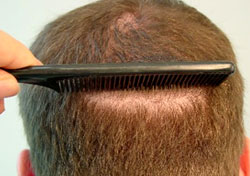If you are going bald, you can choose to just rock the new look, get yourself a wig, or visit a specialist and get a hair transplant procedure. Hair transplants are becoming more and more popular today and when it was introduced to the world a few decades ago, balding men and women realized that there is already a solution to their problem and there is no more reason to suffer. But before you go this route, it is imperative that you fully understand not only the benefits, but also the disadvantages of such procedures.

The Truth About Hair Transplant Scar
Just like every great thing in this world, a hair transplant has its own downside as well. Developing a hair transplant scar is almost difficult to prevent, so it is important to know how to deal with it.
- Some surgeons will say that the hair transplant scar is only going to be pencil thin. After the surgery, however, you will find out that the scar can raise and stretch onto your scalp. This transformation does not happen until a few months after.
- The scars on the donor site are more worrisome than the hair transplant scar that can be found in the area of transplantation.
- If you are unfortunate to develop big scars from the procedure, it can increase your chances for infection and complications. The scars can affect the transplanted hair follicles so you run the risk of dealing with bigger problems other than just bacterial infections.
- Scarring can lead to constant itching. The itching is not going to be momentary because you might end up itching for a very long time, when you develop a hair transplant scar.
The Causes of Scarring
So why do people scar? Not everyone develops a scar after a hair transplant procedure, but those who do would have to deal with scarring because of different reasons. Some people think that scarring is due to the impairment of the patient’s healing capacity but there are other reasons, too.
- Patients who have the tendency to develop keloid face a great danger of scarring after a hair transplant procedure, so it may be smart to be aware of this.
- Patients who suffer from illnesses that impair their body’s healing ability are more likely to develop hair transplant scars.
- Patients who are currently taking medications such as drug-induced coagulopathies pose higher susceptibility to hair transplant scarring.
- If any postoperative complication occurs, it can lead to scarring. Complications usually arise when a patient irresponsibly smokes and exercises too strenuously, even when he or she is not yet fit to engage in such activities.
Repairing Scars
The good news is that if scars do develop, they can be repaired. This kind of procedure is referred to as scar revision and it is done by making an incision through the round and open scars. This procedure is easier if the harvesting area is nearest to the fresh site. The whole process involved in a scar revision is pretty simple, so there’s nothing for you to worry about.
